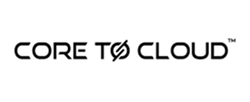Thursday, December 19, 2024 by Shelley Hirst
When picking up the 'phone with buyers, timing is especially important. Too early or too late, the poor outcome will be the same.
Here we discuss the 5 critical components when needing to create a good first impression aiming to highlight ways to delight and engage modern buyers and address the internal requirements to get your ROI soaring.
It's not rocket science to say the most beneficial business relationships are built on a basis of trust and win-win for both parties - in other words, they work for everyone.
And yet, “the tried and trusted” approach to starting a new business dialogue –such as hitting the phones following an email blast, a bit of social, and some beers whilst mingling at trade shows, all still yet to be fully consigned to the twenty-tens.
Relying on these methods is a dangerous strategy, especially in a downturn when competition for IT & Security budgets is fierce. As is not having a truly joined-up marketing and sales process with all stakeholders being clear as to what role they perform in creating revenue pipeline.
Mutual reward
Most tellingly of all from the research we did for this blog, it seems that buyers have some reluctance to believe companies who wax lyrical on how they 'solve problems'. What they do is look for more tangible reference points.
Somewhat unsurprisingly, we found trusted sources such as communities, contacts and peers are the primary sources of validation that people cited as influencing their buying decisions.
Hey Buyer, we can take all your pain away!
Even if sellers are keen to point out how they solve potential customers’ problems by penning empathetic marketing material, it's questionable whether this plays out the minute audiences start clicking on said assets. Cue a torrent of ill-timed calls, and pesky LinkedIn requests which are a far cry from solving their problems at this point.
Your job is to keep them interested until such times they're ready to discuss a real project they have and be informed enough to know when that is (aka getting close to those elusive BANT leads!).
5 critical components in building relationships and trust that go on to inform great sales conversations.
1. Brand amplification
Include brand amplification as part of the demand-creation process. Diving straight into delivering a sales message and call to action means you'll miss out on everyone that doesn't have a particular need for your product or service at a particular point in time. It doesn't mean they'll never be interested.
The likelihood is if you wait for them to have a project in play, they'll already have selected a shortlist of suppliers with whom they're already acquainted.
Avoiding this scenario requires you to continually place your brand in front of them 52 weeks of every year, using multiple communication channels. Every piece of effort counts, not only that which is put into dedicated demand creation programmes as part of a sales initiative.
This is the way to build trust with buyers and maximise sales performance.
2. Attribution cost and ROI
Consider the cost of everything spent on marketing and sales when calculating attribution and ROI. This includes overheads, third-party suppliers, content production, technology, events, telemarketing and so on. This will allow you to work out what your leads are costing.
Whilst this seems an obvious point, so many teams have "marketing" and "sales" budgets where one has no bearing on the other's performance. This is especially important in times of downturn when every pound spent and piece of effort made needs to be towards a core goal.
3. Intent
Analysing buyer interest and using intent triggers to flush them out is optimised by creating content with purpose.
All your content should have a role in the buying cycle, otherwise, it's just a vanity exercise.
Content performance criteria should always be measured to ensure it performs in line with the investment made in it. That means across the entire engagement funnel. Very often, there is great awareness content but it jumps off immediately to a "request a trial/demo/call". Too much, too soon will be a turn-off.
4. Insight
Reporting performance at every step of a buyer's engagement journey offers sales teams visibility of the evolving status towards high-intent leads. No matter how long a sales cycle takes, never losing sight of a lead will create higher-performing programmes and better-informed sales conversations.
Using technology to lay down digital intent markers allows a lot of the heavy lifting to be done automatically so sales can engage at the right time.
There is a significant array of MarTech out there and it's unlikely free or limited versions will do the job it needs to. Investment in licenses, skills and resources in this area are key components for any business serious about its future.
5. Accountability
Being able to identify who is responsible for delivering parts of the process. It's no good if marketing does a great job creating leads only to be told by sales teams they're not good leads for whatever reason. Being clear about what constitutes a lead in the first place, along with how many are required to deliver the sales number.
If this is done upfront, sales then need to be structured in a way that they can follow up on these valuable assets. Setting new appointments probably isn't the job for a seasoned sales professional who is better put to use once that appointment has been made. They need to understand once the lead is passed across it belongs to them to either take forward or return to marketing for more work.
There is no reason to ever lose sight of a prospect - unless they unsubscribe. Great mar-tech enables this.
Adding a partner channel into the mix
Many larger vendors a fully equipped to deliver everything needed to create leads for themselves. However, when they engage their partner channel, it's unlikely they get involved with funded activities that span more than a quarter, favouring more "one-and-done" activities such as events.
This is the most significant area of loss when calculating ROI on activities as it doesn't maximise the opportunity to leverage their existing relationships to a full extent. Not only that, any interest that's starting to be displayed can only be seen as points in time, not through a cycle of true intent.
What's next, Amigos?
Well, firstly, thank you for reading this far. If anything triggers challenges you're currently facing, we'd be happy to show you how streamlining your demand creation in an all-inclusive programme for you and/or your partner channel will guarantee results!
Ask us for a live demo! 30 minutes now, could be the making of your 2025 revenue number!
Frequently Asked Questions
Market Activation identifies in-market buyers (via intent data, behavioural signals) and immediately engages them with tailored outreach (nurture tracks, one-to-one advisor sessions, community invites).
Demand Engine: Targeted outreach (email, ads, sponsorships) that scores clicks → qualified leads → sales-ready appointments.
Performance Dashboard: Real-time visibility into open rates, CTOR, CPL and lead progression via our online sales portal.
Content Amplification: Thought leadership shared in The Amigos Network drives deeper engagement and social proof.
Peer Validation: Prospects get candid feedback from peers on your solutions, shortening the evaluation cycle.
Pipeline Catalysis: Warm introductions and referral paths within the community fuel high- intent conversations.
- Top-of-Funnel: Build credibility through community content and events.
- Mid-Funnel: Leverage peer case studies, expert Q&As, and live demos to answer deep technical questions.
- Bottom-of-Funnel: Invite high-intent members to advisory councils or private 1:1 sessions, often the final nudge before purchase.
- Interesting content: We originate, curate, and syndicate different types of content we know our audiences want to engage with and tell them it’s there.
- Sponsored content: We use sponsored content to drive engagement with individual brands.
- Promotion: We promote that content via multiple channels such as email, social media, YouTube, and so on.
- Identification: We ingest company-level engagement signals and combine it with known contacts that may be researching key topics.
- Segmentation: Members are bucketed by level of intent (high, medium, low) plus ICP fit and company size.
- Activation: High-intent members receive prioritised community invitations (events, focus groups, product deep-dives) to accelerate deals.
- Purchased data highlights who’s in-market.
- Community engagement reveals what questions they’re asking, so your nurture can be hyper-relevant.
- Result: A 2–3× lift in meeting acceptance and pipeline velocity vs. cold outreach alone.
- Marketing owns the nurture tracks, community invites, educational content, and event promos.
- Sales intervenes only at “high-intent + active community engagement” thresholds, with account-specific demos and peer introductions.
- Outcome: Fewer wasted calls and a higher win rate on truly qualified opportunities.
- Engagement Metrics: Community log-ins, event attendance, content downloads.
- Intent Conversion: % of intent-scored members who join private roundtables or request demos.
- Pipeline Velocity: Time from first community touch to opportunity creation.
- Revenue Impact: Contribution of community-sourced deals to overall bookings.
- Average Weekly Open Rate: 40%
- Average Weekly Click-to-Open Rate: 70%
- Average Cost-per-Lead: £45
- Minimum ROI: 500%
- Average Dwell Times: 1 minute 45 seconds




















